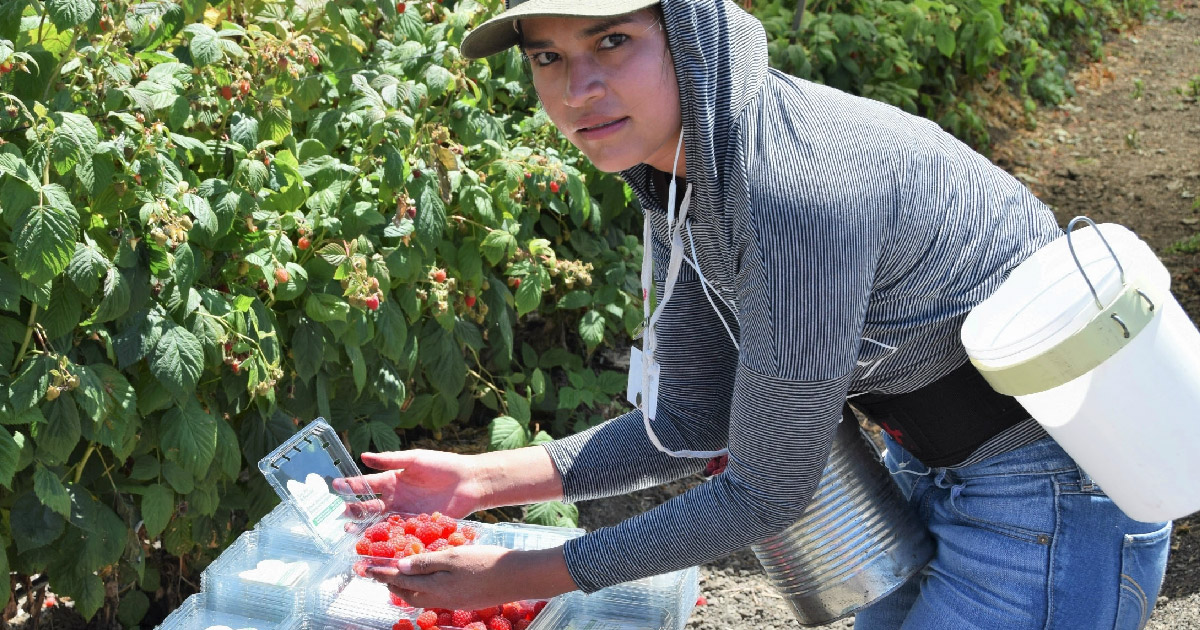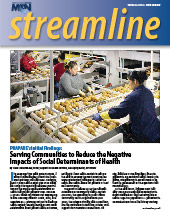
National Advisory Council on Migrant Health Recommends Greater Attention to Labor Trafficking
In November 2018, the National Advisory Council on Migrant Health (NACMH) held its third and final meeting of the year to discuss the numerous health care concerns that mobile agricultural workers face, and the ways in which community health centers are and could be responding to those concerns. Following the meeting, the Council posts official recommendations to the Secretary of the US Department of Health and Human Services and the Administrator of the Health Resources and Services Administration (HRSA). To elevate the concern and to empower clinicians to better identify and respond to trafficking, NACMH recommended that HRSA support health centers in:
1. Raising awareness of labor trafficking by increasing health center capacity to identify victims of labor trafficking, including by training staff on screening;
2. Linking mobile and seasonal agricultural workers who have been trafficked or exploited to restorative services and expanding medical-legal partnerships; and,
3. Establishing partnerships with other federal and community groups like Migrant Head Start to increase capacity.
The inclusion of trafficking in the recommendations “is a reflection of the critical role that HRSA plays to the public as a whole, in terms of health provision in this country, and the fact that they are providing the lion’s share of health services to some of our most vulnerable, including foreign nationals,” Pfenning said.
Read the NACMH recommendations in full at https://bit.ly/2FPviVr
For decades, clinicians serving mobile agricultural workers across the country have reported being blocked from providing the care that workers need. Whether it be a mobile health clinic in Washington that is denied entrance to a labor camp, or an outreach worker in North Carolina who, in conversation with a worker at a gas station, is cut off by a crew leader, clinicians are frequently troubled by the limited strategies they can employ to serve agricultural workers’ health needs. Yet, such situations as these raise possible red flags for which clinicians need to be vigilant: Could this be a sign of labor trafficking?
“In the past, the criminal justice framework has been the predominant way in which the field has examined and responded to human trafficking,” noted Elizabeth Pfenning, Program Specialist for the Office on Trafficking in Persons, part of the US Department of Health and Human Services’ Administration for Children and Families. “While this perspective is an important one, human trafficking is also a public health issue. We know there are socioeconomic factors, or root causes, that make individuals, families, and communities vulnerable to human trafficking -- and the public health framework positions us to better develop and deliver effective interventions aimed at preventing and reducing the harmful impacts of human trafficking across the lifespan of our patients and clients.”
Mobile and seasonal agricultural workers are at high risk for labor trafficking, as their mobility, tenuous and temporary employment status, and documentation status increase their vulnerability, while linguistic and cultural barriers, lack of access to health care or fragmentation of treatment plans, and economic pressures, among other barriers, reduce their ability to report trafficking and get out of a trafficking situation. Certain segments of agricultural workers appear to be at higher risk for labor trafficking. The National Human Trafficking Hotline and BeFree Textline has reviewed hundreds of cases they’ve received from the agriculture and animal husbandry industry. Their report found those trafficked as disproportionately Latino male migrant workers from Mexico and Central America on H-2A visas.
To assist clinicians in understanding, identifying, and responding to red flags of trafficking, the National Human Trafficking Training and Technical Assistance Center (NHTTAC) has developed numerous tools, trainings, and other technical assistance. Their online training for clinicians, SOAR to Health and Wellness Program, is designed specifically for clinicians and is available in English and Spanish. The free CE/CME training modules focus on: The SOAR Framework, Trauma-Informed Care, and Culturally and Linguistically Appropriate Services. Four additional modules, on specific considerations for professionals in Behavioral Health, Health Care, Public Health, and Social Services, are set to be launched this month.
Clinicians at community health centers are critical partners in the prevention and reduction of human trafficking, noted Pfenning, and the training modules build clinicians’ ability to address red flags even within the constraints of the limited patient encounter. “The online trainings involve a grounding in what victim-centered service delivery entails for clinicians, and unpacks what culturally sensitive and linguistically appropriate services look like,” Pfenning said. “If we’re going to meet our patients where they’re at, what are some of the cornerstones of my care or my service that allow me to do that, that will yield better health outcomes for the patient in the future?” The modules also investigate barriers to identification, both on the patient side and the provider side, including inherent and conscious biases and time constraints. “We try to give some specific suggestions, through case examples, on how to best handle certain interactions, how to build rapport, how to provide transparency around patient confidentiality, how to screen, and when and where it’s appropriate to screen,” she noted.
Clinicians’ role in identifying and reporting trafficking situations is growing. Between 2007 and 2017, health care professionals were the seventh most frequent “signaler” type among the National Human Trafficking Hotline’s 30 possible signaler types, or reporting roles. During that decade, reports from health care professionals to the hotline increased 171 percent.
Yet, a clinician’s role is not to push for disclosure. “Trauma-informed care recognizes that trauma is ubiquitous and has widespread impact for patients, which is something clinicians should recognize and have reflected in their policies and interactions. You’re not there to definitively determine ‘yes’ or ‘no’ as to whether the individual is a victim of trafficking,” Pfenning emphasized. “You’re there to identify red flags and meet the immediate, short-, and long-term health needs of the client,” including through making referrals and helping a patient access the care and stabilizing services that will help him or her exit a trafficking situation.
“I think we have a lot of clinicians who are terrified -- there’s a fear of the ‘yes,’” Pfenning admitted. “They don’t know what to do if there is a positive screening... We want clinicians to feel empowered and equipped in their very unique role in interacting with this population, and provide them with models for building community partnerships and referrals that can provide those services in a victim-centered, trauma-informed way.”
Sex Trafficking and Labor Trafficking
Human trafficking resources and attention have often focused on the female profile, leaving male and transgender victims of trafficking with fewer options of recourse. “Overwhelmingly, there are specialized services that are tailored to women and girls,” who are the majority of the victims of sex trafficking, Pfenning said. “When it comes to housing, for example, there aren’t as many specialized services or shelters designed to meet men, boys, and transgender persons where they’re at, who are also potential victims of trafficking, the way there are resources for women and girls.” Health centers are encouraged to leverage community collaborations to open up resources for male and transgender victims of trafficking. Clinicians are also encouraged to keep the two types of human trafficking -- sex and labor -- in mind when dealing with one or the other. Clinicians are “likely to encounter both sex and labor trafficking in these settings, as individuals who have experienced both forms of trafficking have emerged from agricultural settings and [have been] reported to the National Hotline and served by our various grantees,” Pfenning clarified. Mobile and seasonal agricultural workers are also at risk for sex trafficking, again, because of their precarious labor and economic situations, coupled with their mobility, isolation, and lack of access to care.
Resources
The National Human Trafficking Training and Technical Assistance Center
(https://www.acf.hhs.gov/otip/training/nhttac) is equipped to deliver specialized training and technical assistance that informs and enhances the public health response to human trafficking. To request TA, email NHTTAC (info@nhttac.org) or call 844-648-8822 to speak with a NHTTAC Specialist.
SOAR Online
includes a series of accredited training modules in English and Spanish, at https://bit.ly/2IGc8Rs.
The National Human Trafficking Hotline
a 24/7, confidential, multilingual hotline serving victims and survivors of human trafficking and the anti-trafficking community in the United States. To report trafficking or request assistance, call 1-888-373-7888, text HELP to BEFREE (233733), email help@humantraffickinghotline.org, or chat online at www.humantraffickinghotline.org/chat. Access more resources and statistics at the Hotline’s main page, www.humantraffickinghotline.org.
Through the Look Beneath the Surface campaign, HHS developed a pocket card, brochure, and poster for health care providers who may encounter patients who are experience human trafficking. These materials are available for download in both English and Spanish at https://bit.ly/2Bym5PU.
Read this article in the Spring 2019 issue of Streamline here!
Sign up for our eNewsletter to receive bimonthly news from MCN, including announcements of the next Streamline.
